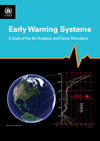- Access to Finance
- Annual Report/2011
- Billion Tree Campaign
- Biodiversity
- Biosafety
- Business & Industry
- Champions of the Earth
- Climate Change
- Disasters & Conflicts
- Ecosystem Management
- Education and Training
- Employment
- Environmental Assessment
- Environment Management Group
- Environmental Governance
- GEAS
- Gender
- Global Environment Outlook
- Governments
- Green Economy
- Greening the Blue
- Harmful Substances
- INFORMEA
- IYSEA
- International Year of Forests
- Land
- Major Groups and Stakeholders
- OARE
- Our Planet
- Ozone
- Poverty & Environment
- Resource Efficiency
- UNEP Resource Kit
- Sasakawa
- Science
- SEED Awards
- South South Co-operation
- Sports & Enviromnent
- Sustainable UN
- Transport
- Tunza
- UN REDD
- UNEP Evaluation
- UNEP Governing Council
- UNEP Planning and Monitoring
- UNite for Climate Change
- Urban Issues
- World Environment Day
- Regional Offices
- Africa
- Asia Pacific
- Europe
- Latin America
- North America
- West Asia







